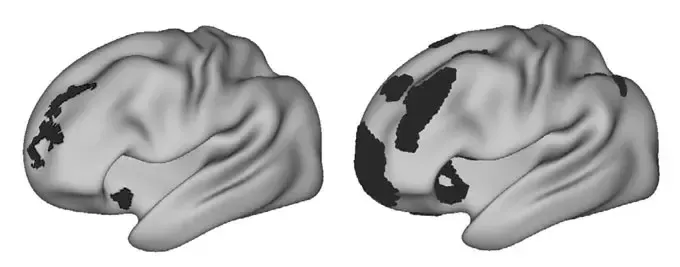Brain Network Linked to Attention Larger in Individuals with Depression

Recent research reveals crucial insights about brain networks in individuals with depression. Notably, those with depression exhibit a salience network that is nearly double the size compared to individuals without depressive symptoms. This difference remains consistent even when symptoms fluctuate.
Charles Lynch, a neuroscientist at Weill Cornell Medical College, emphasizes, "When we started this project, we weren’t expecting to find stable differences in brain activity patterns in people with depression." Instead, the research initially aimed to capture changes linked to symptom fluctuations. The study, published in Nature on September 4, suggests practical applications for enhancing brain stimulation therapies for depression.
Research Methodology
Lynch and his team used long-term brain imaging data to explore the underlying factors affecting mood changes in depression. They examined data collected from over 100 individuals over several days, incorporating brain activity and self-reported mood ratings for each scan. This approach allowed for a comprehensive evaluation of multiple patients, both with and without depression.
Analyzing these individuals led to the identification of the salience network. This critical area processes relevant stimuli and directs attention. The discovery that this network's size in people with depression increased significantly establishes a pivotal link to depressive conditions. The team noted that the salience network also influences two additional networks concerning self-focused thoughts and working memory in goal-driven tasks.
Stability and Changes in the Salience Network
While the overall shape of the salience network was consistent across groups, its dimensions differed. Patients with depression exhibited broader borders of this network. Surprisingly, not all aspects remained static; specific shifts in connectivity between network components correlated with symptom intensity.
For instance, a study that monitored two patients highlighted connectivity variations. In cases where patients experienced less joy, a weakening of interconnectivity occurred between the nucleus accumbens, associated with reward, and the anterior cingulate, linked to decision-making.

Broader Implications for Other Disorders
The exploration extended beyond just depression. Individuals diagnosed with bipolar II disorder also demonstrated larger salience networks. However, variants like autism or obsessive-compulsive disorder did not reflect similar expansion. As Lucina Uddin from UCLA remarked, understanding the changes linked to salience network size could be pivotal for future comprehensive studies.
Investigating Youth and Future Risks
Additionally, the research targeted adolescents. By examining a sample of 57 children, the study entrenched its findings further. Those scanned at ages 10 to 12 who later developed depression showcased significantly larger salience networks than those who remained unaffected. Hence, the size of this network appeared stable regardless of their mood trajectory.
This suggests that the expanded salience network may act as a precursor rather than a consequence of developing depression. The researchers propose that genetics or early-life stressors may influence these networks, although more extensive research is essential for definitive conclusions.
Future Directions
Gaining insight into the neural dynamics behind depression could open avenues for more effective therapeutic strategies. As current medications often show inconsistent results, identifying the structural activity of brain networks could enhance treatment precision.
Lynch concludes, "Understanding the spatial organization of brain networks in individuals with depression may refine how we administer brain stimulation therapies."
Earlier, SSP reported that scientists discover a fascinating third state of life beyond death.



















